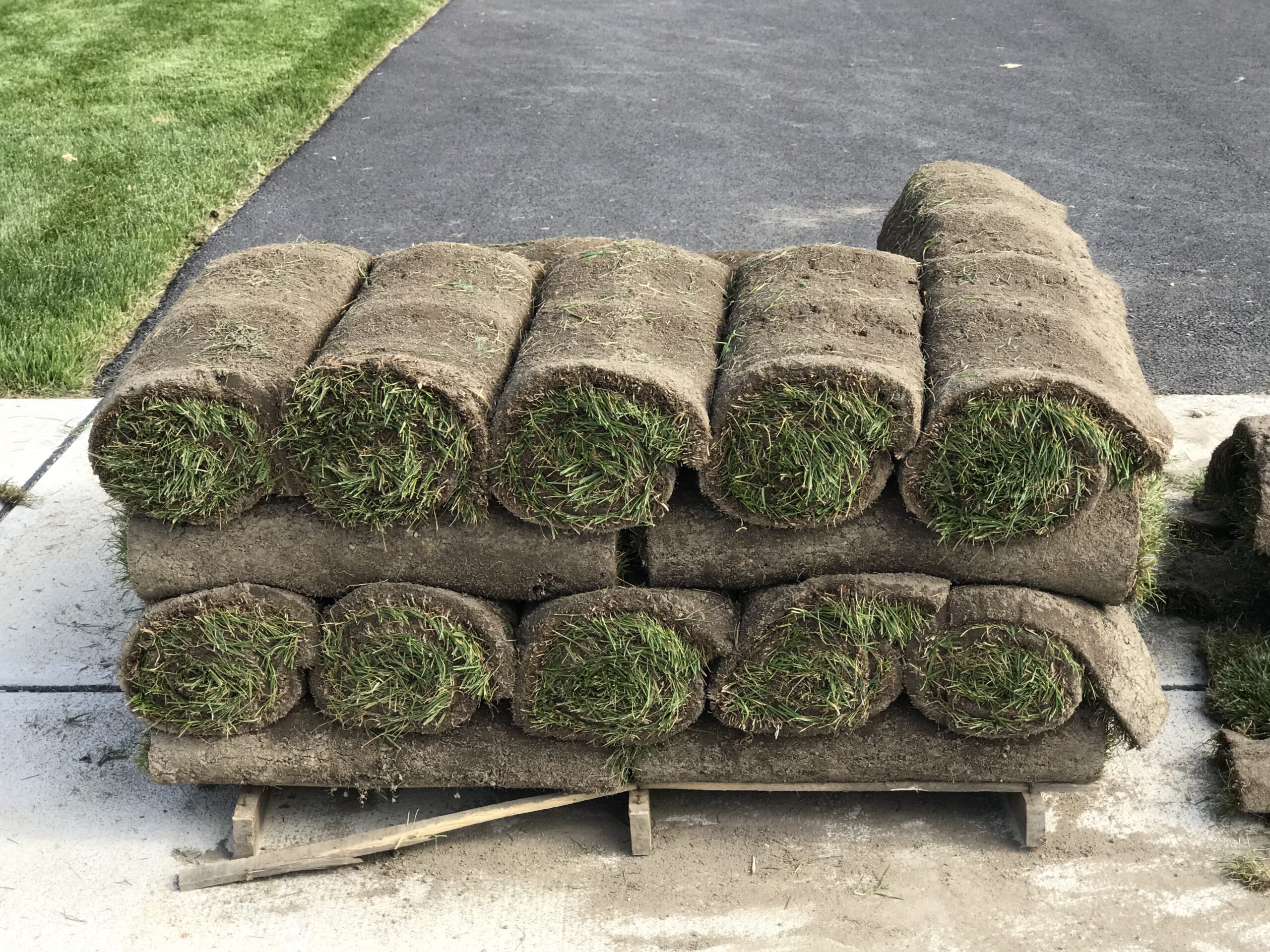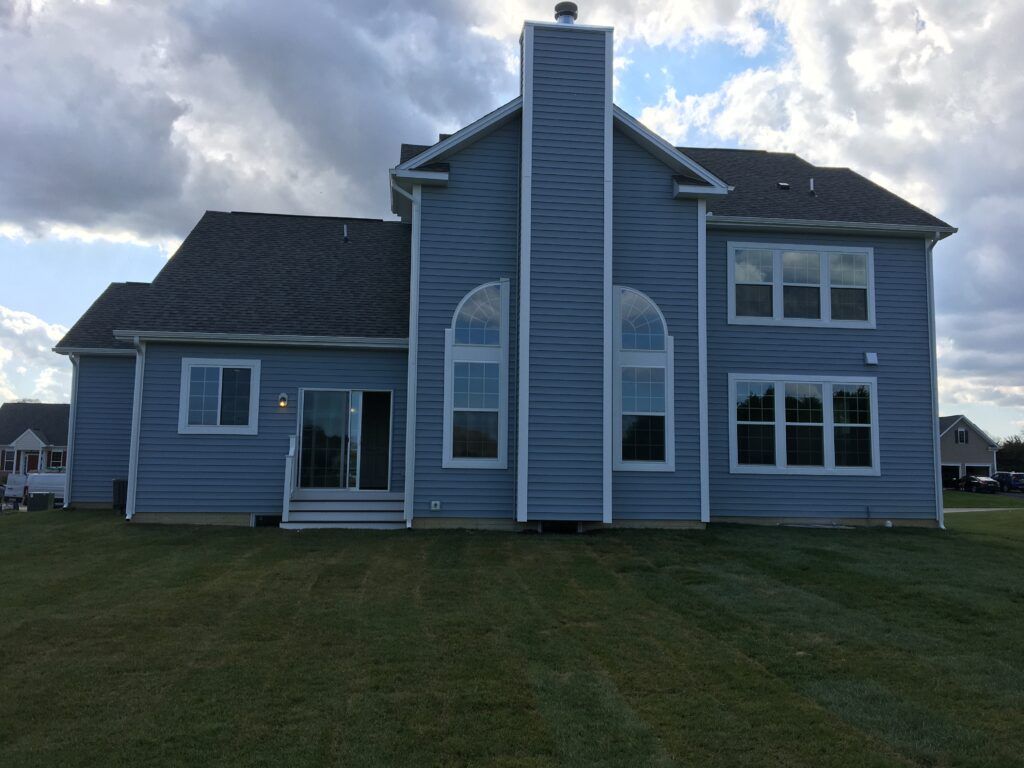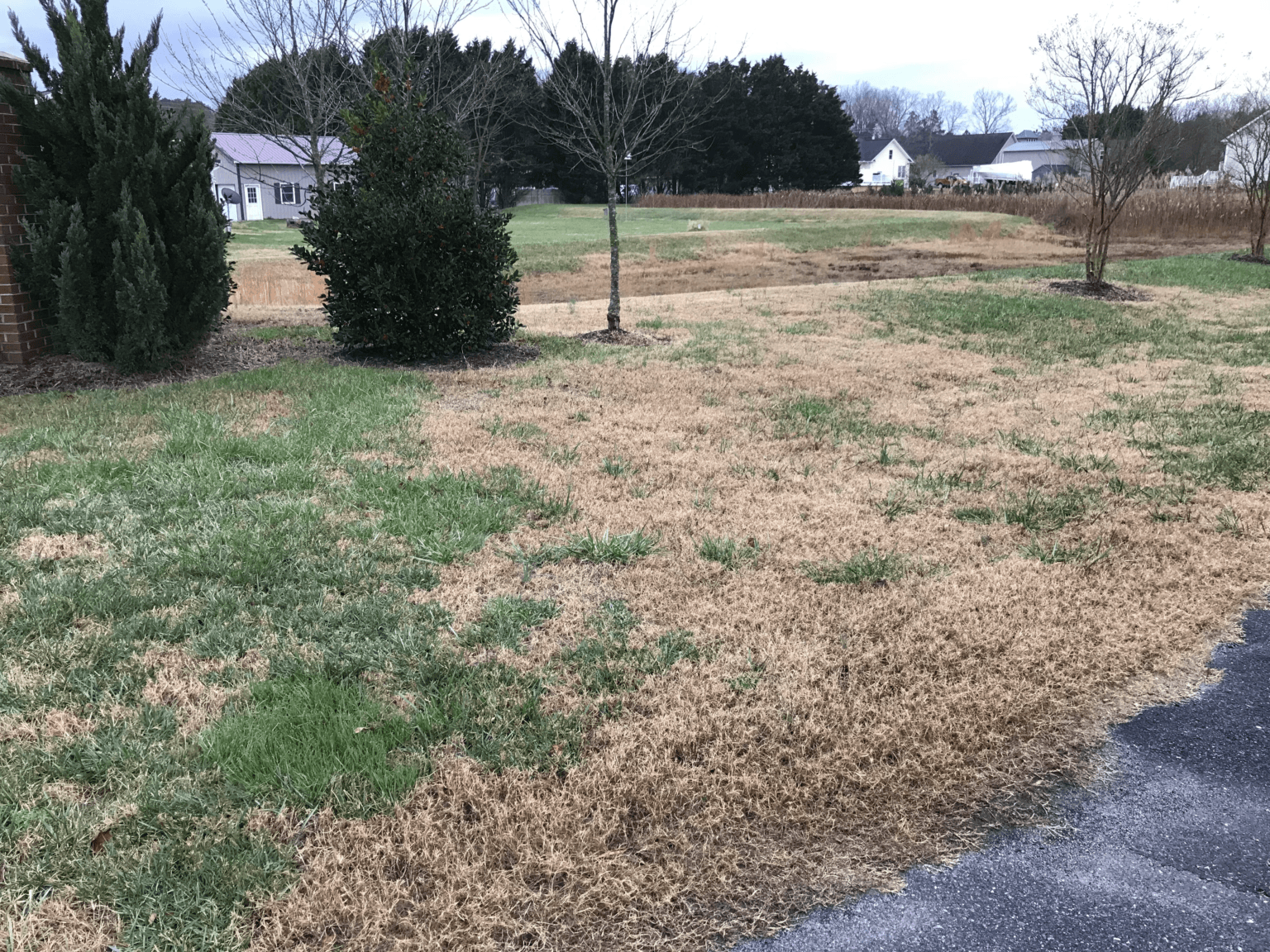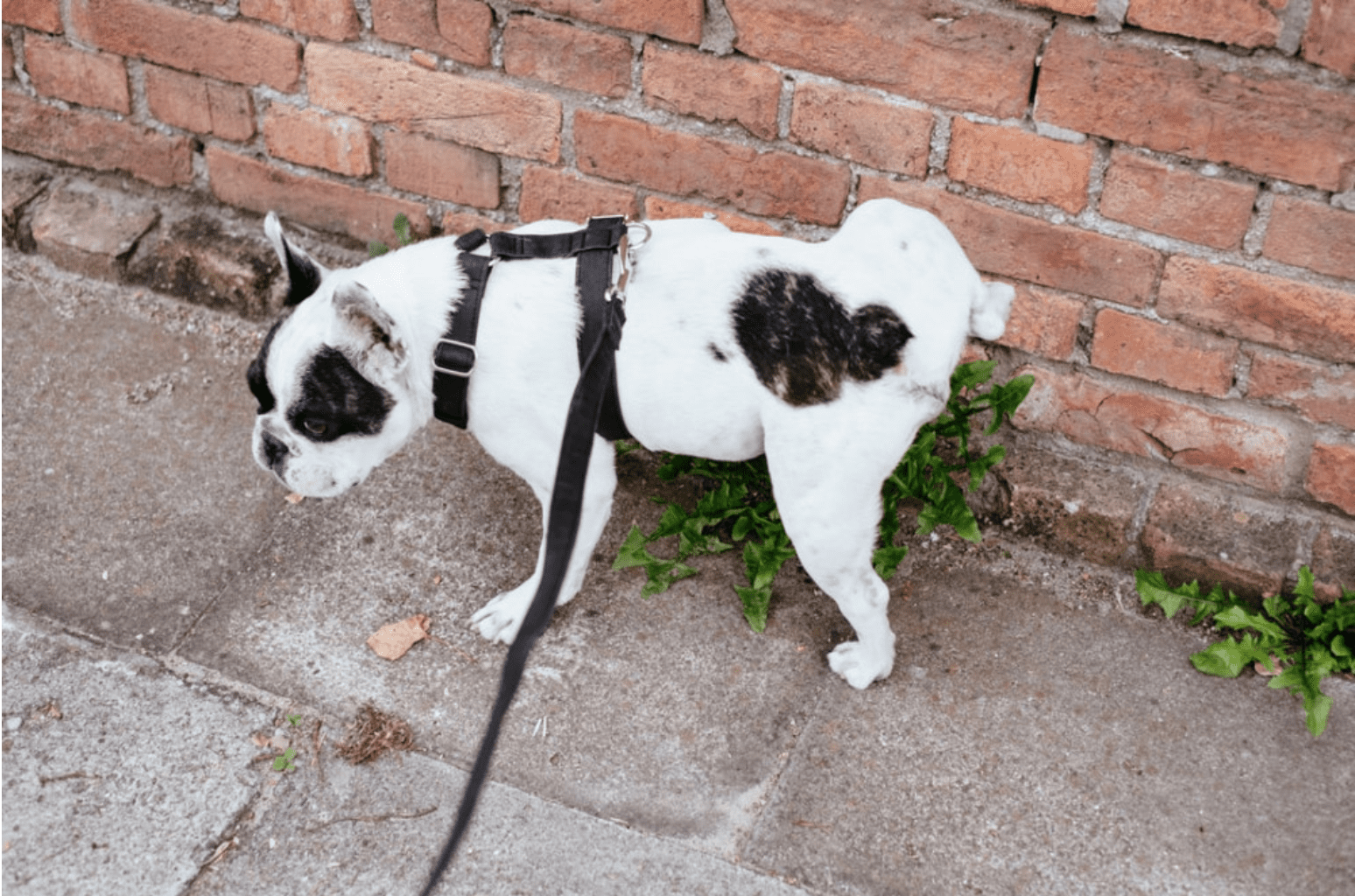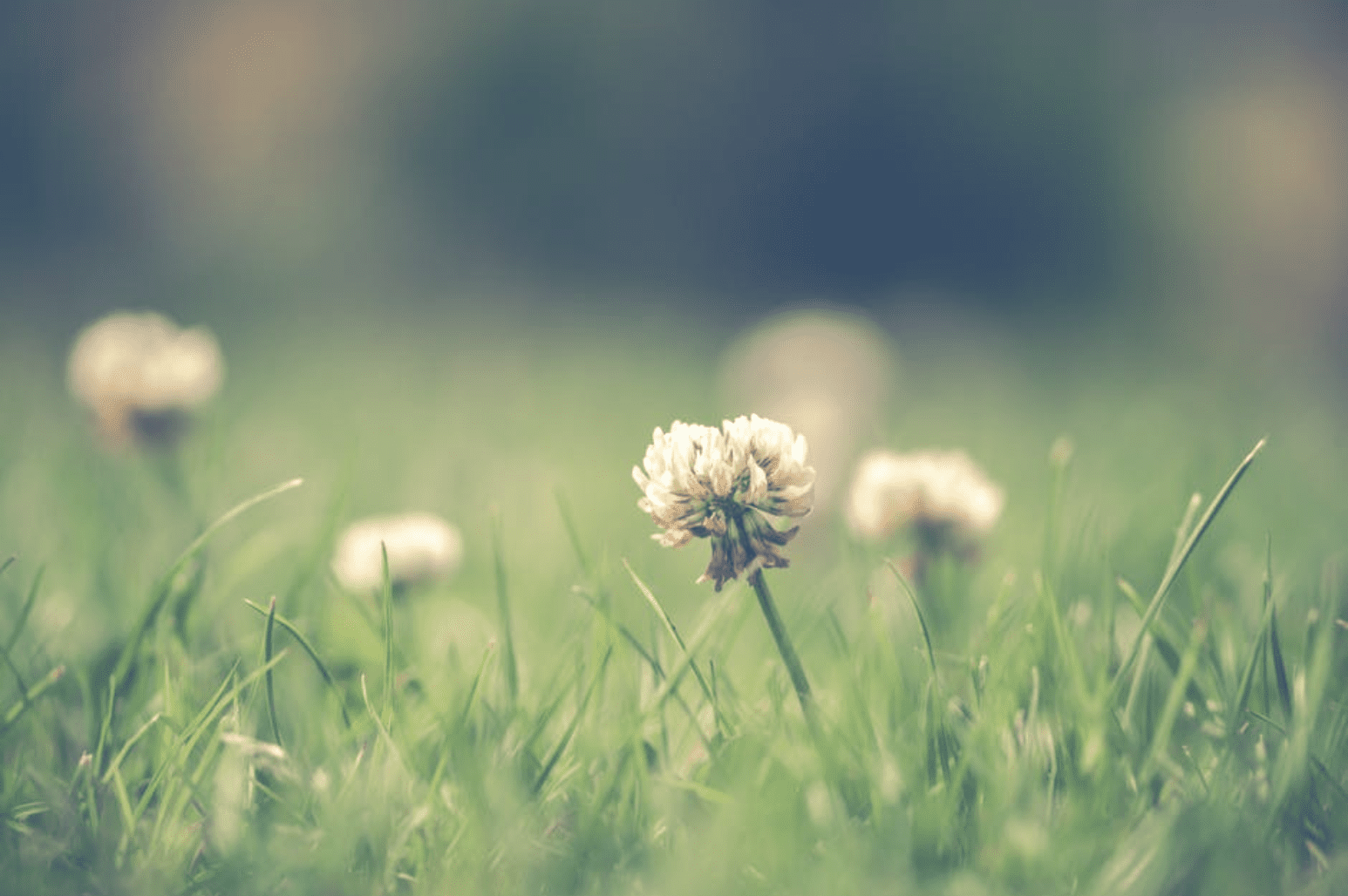We all want our lawns to look lush, healthy, and beautiful. After establishing new sod, you will likely be a bit nervous if you don’t know how to properly care for it. In this post, I will discuss the required care and maintenance for new sod to keep your lawn perfect.
When caring for your new sod, the most important thing you should do is water it regularly. Sod needs constant moisture to establish a healthy root system. You should not initially walk on your sod to prevent damage before it has been established.
Many people prefer to install a new lawn via sod rather than seed because it doesn’t take nearly as long to see results. However, that doesn’t mean that sod requires no work at all. Each stage of sod growth requires different types of maintenance and care. I’ll walk you through everything you need to know to help your sod grow strong and healthy.
Our New Sod Lawn
If you are reading this blog, you may know that we got our new house built in Lewes, DE, and closed the sale on April 17, 2020. The picture on the left below is what we saw what we came to sign our documents.
I was telling my wife that we had to figure out how to get grass grown on our almost one acre of land. We didn’t realize that our purchase contract included the installation of sod on the property.
To our surprise, we came a week after and the whole thing was finished. The sod had been installed, and it looked great. See the picture below on the right.
I was very curious about the whole process. How can you have our lawn ready overnight? What is it that I need to worry about to make sure the lawn continuous to look as nice as it looks now? So, I talked to our builder and researched the topic to learn more about it. This is what I have learned about my new sod lawn.
Installation of Your New Sod
As soon as your sod is delivered, you should install it into your lawn. Waiting too long will expose the root system to too much heat, and your sod will certainly die off. But don’t confuse being dead with being dormant, a natural reaction of grass to preserve water and nutrients in certain weather conditions.
Right before you roll your sod out, however, make sure that you water your soil. Dry soil will deplete all the moisture already in your sod, and if your sod becomes dry, it can quickly die. Wet soil will help to preserve your sod’s moisture.
You may also consider fertilizing the ground beforehand. Most experts recommend a fertilizer with a balanced 10-10-10 or similar formula ratio of nitrogen, phosphorus, and potassium to encourage plant and root growth and increase resistance to diseases and pests.
The First Two Weeks of Care
Once you have rolled out your sod, it is time to get it wet. On the day your sod is first installed, you should provide enough water to soak two inches into the soil. You should keep your sod consistently moist, which means you might have to water your sod up to six times per day.
The ground needs to remain moist (but not wet) so that the root system can establish itself. Hotter climates or areas in full sun will require more frequent watering than cool and shady locations.
You should also consider the kind of soil your lawn has. Well-draining, loamy soil will require more frequent watering than dense, clay-based soils with less porosity.
One final note about watering within the first two weeks is that you should never water in the late evening. If you water just as it is becoming dark and cold, you will be creating the optimal conditions for fungus growth, which can quickly kill off a newly established sod.
With a lush new lawn just installed, you or your family members will likely want to walk on the grass immediately. You should not walk on your sod for the first two weeks, as the grass will be delicate and vulnerable to damage.
Without a strong root system in place, the grass won’t be able to bounce back like lawns already established. It would be best if you waited until the first time you mow your lawn before you walk on it.

You should mow your lawn fourteen days after the sod has been installed. A few days before you mow, gradually wean your grass off of its regular waterings. You don’t want the soil to be too wet and loose when you are mowing.
You might be tempted to mow your lawn short, but you should only mow off a maximum of one-third of the grass blades. Anything more will cause undue stress to your sod and can kill off some of your new grass.
The picture above shows the first mow of my sod lawn. We hired a landscaping company to take care of the first few mowings. I will have to take over after that because it costs about $70 per mow, which is more money than I want to pay right now.
Depending on the type of grass you are installing, you also need to be aware that the grass can go dormant, which is not the same as being dead.
Weeks Three and Four
Your sod will be much stronger during week three, as the roots will have had enough time to establish themselves. However, you should still treat your lawn with care. You should decrease the frequency of waterings gradually, while also increasing the duration of your waterings.
Your eventual goal is to provide longer waterings that soak further down into the soil to encourage deeper root growth. By week four, you will only need to water your lawn once a day.
Choosing a Fertilizer
Between weeks four and six, you should fertilize your lawn. To promote a lawn that is lush and healthy, fertilizer is a must because it encourages growth as well as increases disease resistance.
When you fertilize a lawn that has already been established, you will generally want a fertilizer with higher levels of nitrogen and potassium and lower levels of phosphorus. Nitrogen will encourage lush and green plant growth, while potassium will increase resistance to disease.
Phosphorus is best for establishing a root system, so the first time you fertilize your lawn, you will want a fertilizer with plenty of phosphorus. While your sod’s root system will be much more strongly established by now, you will still want to encourage root growth as much as possible in the beginning.
When selecting a fertilizer, you will usually find yourself with a choice between liquid fertilizer and granular fertilizer. Both have pros and cons. Liquid fertilizer is typically chemically-based and works more quickly.
However, you will need to use liquid fertilizers more frequently, because the grass will use up all of the nutrients more quickly. Liquid fertilizers are also more dangerous, so if you have children or pets, you may prefer to use granular fertilizer.
Caring for Newly Installed Sod-Video
This video from Oklahoma Gardening goes over the most important tips for establishing turf from sod.
Final Thoughts
The first few weeks after your sod has been installed are crucial to encouraging proper growth. Your lawn will surely grow strong and healthy in just over a month with the correct methods of watering, mowing, and fertilizing. If you care for it properly, your lawn will last many years, and it will look just as lush and beautiful as the day it was first established.
House Maintenance List
I want to identify repetitive tasks that need to be done to maintain our house. I add these items to the House Calendar so that I don’t forget to complete them. Two things come to mind out of this post:
- Water the lawn: 2-3 times per week
- Mow the lawn: Weekly
Related Posts:
